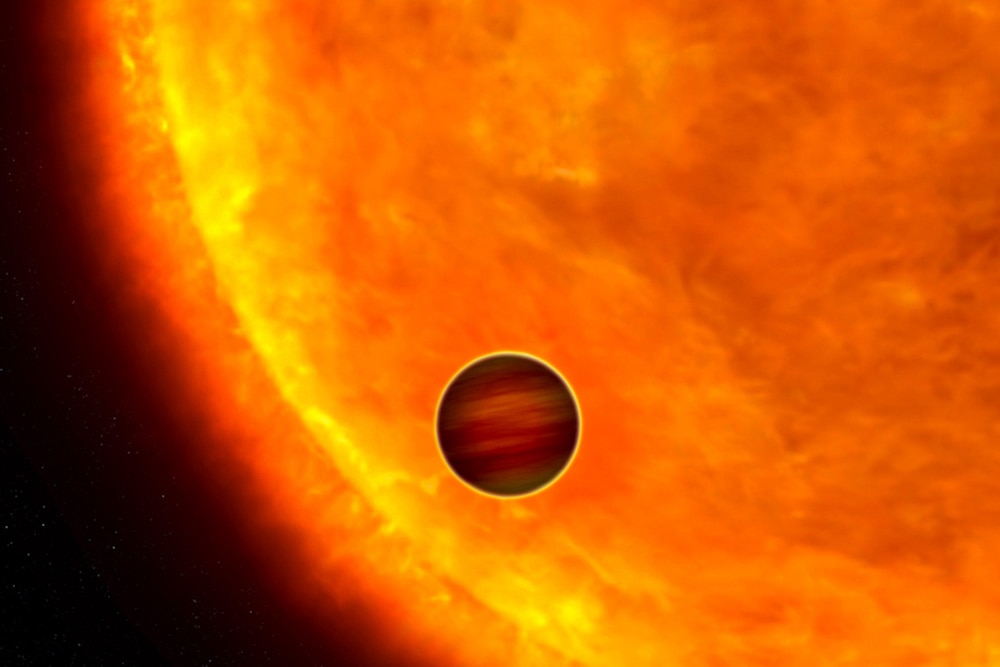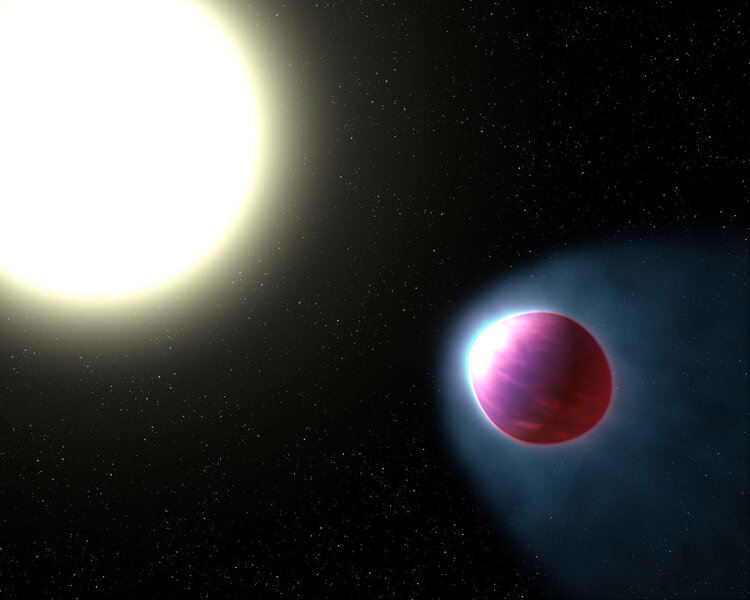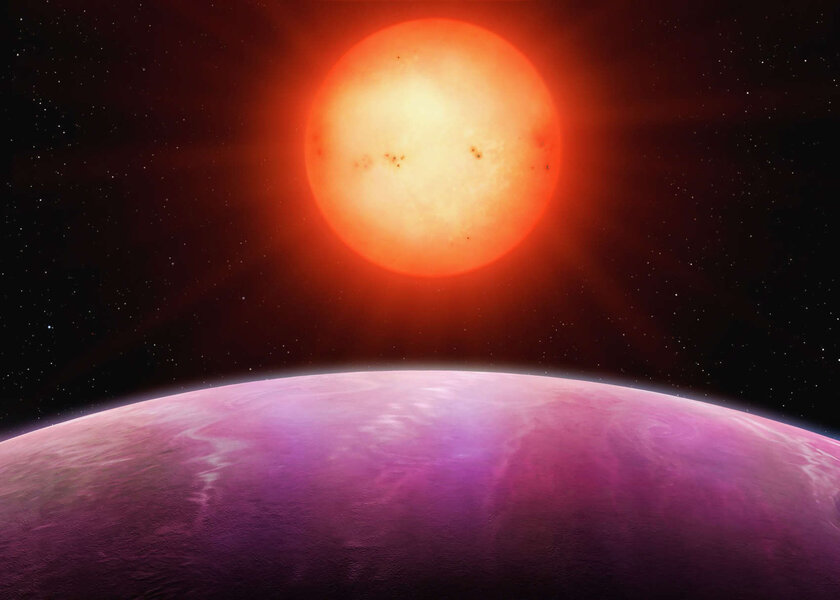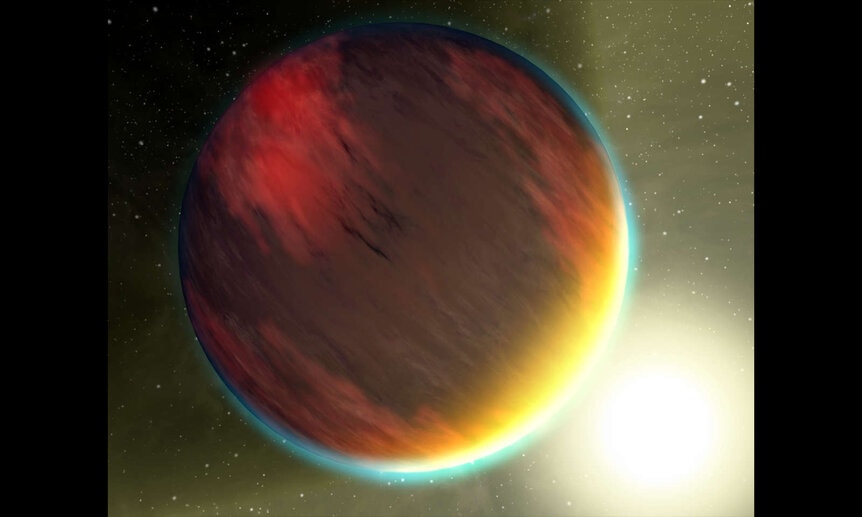Create a free profile to get unlimited access to exclusive videos, sweepstakes, and more!
Newly found ultrahot exoplanet has a 16-hour year… and is also doomed
Exoplanet has the shortest orbit ever seen for a gas giant.

Astronomers have found an exoplanet that is so close to its host star that its "year," the time it takes to orbit the star once, is a mere 16 hours! It's so close in that it's the second-hottest exoplanet ever found (after KELT-9b), and the shortest orbit ever seen for a gas giant.
Even cooler: The planet is doomed. Already broiling hot and losing its atmosphere, gravitational interactions with the star bring it ever-closer. Eventually, it'll be consumed by the star.
The star is called TOI-2109 — the 2109th TESS Object of Interest, where TESS is the Transiting Exoplanet Survey Satellite. TESS scans the sky looking at relatively bright (and therefore, in general, nearby stars). It tracks their brightness, and if a planet passes directly in front of the star, making a mini-eclipse called a transit, the star's light dims. The amount the star dims depends on the size of the planet, and the length of the transit tells us about the planet's orbit.
TOI-2019 (also called BD+16 3058 in most star catalogs) is about 860 light years from Earth toward the constellation of Hercules, and is somewhat more massive and bigger than the Sun. It's what we call an F-type star, meaning it's also hotter than the Sun.
Which means the planet, called TOI-2109b, is really cooking. TESS data shows it's 1.35 times the diameter of Jupiter, and orbiting the star at a brain-frying 1.5 million kilometers above the star's surface. That's a mere 1% of the distance of the Earth from the Sun. That planet is getting cooked. Observations from the ground combined with TESS measurements show the planet's temperature at its cloud tops is about 3,360°C (6,000+° F). Ouch.
In fact the planet is so ridiculously hot that on its dayside it glows like a star, and when it passes behind its host star a secondary drop in brightness is seen by TESS because now the star blocks the planet! The planet's own glow contributes to the total light seen from the system.
The planet's mass can be found because as it orbits it tugs on the star with its gravity, so it makes a big circle and the star makes a little one. That means sometimes the star is moving toward us and sometimes away, which imparts a Doppler shift on its light. That measurement finds the mass of the planet to be about 5 times Jupiter's.
I chuckled when I saw that. Planets like Jupiter are a little weird; their cores are under so much pressure that an odd quantum mechanical mechanism called degeneracy kicks in, and it has the weird property that if you add more mass the planet actually shrinks. We see this with really massive exoplanets all the time, where they have more mass than Jupiter but are actually smaller.
So if TOI-2109b is more massive, why is it bigger? Because it's puffed up from the star's heat. When you heat a gas it expands, and that's what's going on here. This planet is so freaking hot it's inflated like a balloon.
In fact it's so hot it's very likely losing atmosphere to space. What we think of as heat on a macroscopic scale is really molecular motion on a microscopic one. The hotter a gas the faster its molecules jiggle around. The material at the top of TOI-2190b's atmosphere are so hot they can achieve enough speed to escape the planet's rather intense gravity (about 7 times Earth's), so up close it may look like a gigantic comet, its air blowing away like a tail.
But it gets much worse for this planet. It's so close to the star that the star raises tidal bulges enough to distort the planet into an egg shape, and the planet raises bulges in the star as well (this is actually seen in the observations, since it changes the star's apparent brightness as it rotates). The star spins a bit more slowly than the planet orbits, so the bulge raised in the star actually pulls the planet backwards a bit, stealing orbital energy from it (this is similar though opposite to what happens to our Moon due to the tidal interaction with Earth). That means that not only is the planet close to its star, it's actually getting closer all the time.
If true, the orbital speed of the planet will increase, which means its orbital period will decrease, perhaps measurably. The TESS observations give a phenomenally accurate orbital period of 0.67247414 ± 0.00000028 days — 58101.766 seconds, or a little over 16 hours, with an accuracy of just ±25 milliseconds! Complex mathematical calculations indicate TOI-2109b's orbital period should shorten by almost one second per (Earth) year, so that may be seen by TESS the next time it observes that part of the sky next year in 2022.
That's pretty amazing. If this planet is actually getting closer to its star via tides then we may be able to see it in the observations pretty soon.
If true it means the planet is doomed. That star is hot, and the planet close. It'll get closer and closer to the star, until they physically collide! At that point, bye bye. I'll note that many planets would get torn apart by their star's gravity if they get too close, but in this case TOI-2109b has enough mass that it can hold itself together probably right up to the point the star consumes it.
The good news (for us at least) is that the star is bright enough to be easily observed with ground-based telescopes, so keeping an eye on it will be relatively easy. A planet like this is an interesting laboratory for lots of different kinds of orbital and atmospheric observations, and well as understanding what the planet is doing to its star. It'll likely be millions of years before it plummets to its certain starry doom, but there's a lot more to learn between now and then.





























